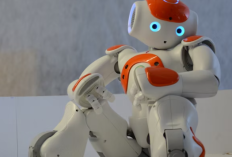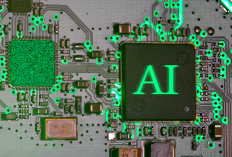Artificial Intelligence That Understands Human Silence – A New Era of Empathy Tech

A girl looks at a metal face on a computer-Andres Siimon-https://unsplash.com/
When words fall short, machines are learning to listen to the spaces in between.
The Moment Technology Learns to Pause
Silence has always been more than the absence of sound — it’s a language of its own. A moment of hesitation, a deep breath, or an unanswered question can often reveal more about human emotion than spoken words ever could. Now, a new generation of artificial intelligence systems is beginning to understand this truth.
Known as empathy tech, these systems are being trained not just to hear what humans say, but to sense what they do not. From detecting emotional pauses in conversations to reading the rhythm of human interaction, AI is entering an era where listening goes beyond language.
Decoding Silence: The Subtle Signals of Emotion
In human relationships, silence can express discomfort, reflection, or trust. Translating that into code has long been one of AI’s biggest challenges. Traditional algorithms interpret input — words, images, numbers. But silence? It’s context. It’s timing. It’s empathy.
- Contextual Listening: AI models analyze pauses, tone shifts, and breathing patterns to detect unspoken emotions.
- Behavioral Mapping: Systems can connect patterns of silence to psychological states, enhancing mental health support tools.
- Adaptive Response: Instead of offering quick replies, AI learns when to remain quiet — a digital form of respect.
These subtle interpretations are redefining how we interact with machines — transforming them from information engines into emotional mirrors.
Applications: Empathy Meets Innovation
The potential of silence-aware AI extends across industries. In healthcare, it could help detect early signs of depression by analyzing speech gaps in therapy sessions. In customer service, it could help bots recognize frustration before users express it. Even in education, it might assist teachers by sensing when a student’s quietness signals confusion rather than disinterest.
By listening more deeply, these systems aren’t replacing empathy — they’re amplifying it, enabling humans and machines to connect in more natural, humane ways.
The Ethical Frontier of Emotional Machines
As AI begins to interpret silence, new ethical questions emerge. Should machines analyze moments that humans reserve for privacy or vulnerability? How much emotional intelligence should we allow technology to possess? Understanding silence means understanding the human psyche — and that power must be handled with care.
The challenge isn’t in teaching machines to feel, but in ensuring that their perception of feeling remains in service to humanity — not in control of it.
A Quiet Revolution in Communication
The future of empathy tech isn’t loud. It doesn’t announce itself through flashy interfaces or robotic voices. It exists in quiet moments — a pause before responding, a machine that chooses silence over noise. In those moments, technology becomes something more than a tool; it becomes a listener.
Perhaps the most human thing artificial intelligence can learn is not what to say, but when to say nothing at all.


















